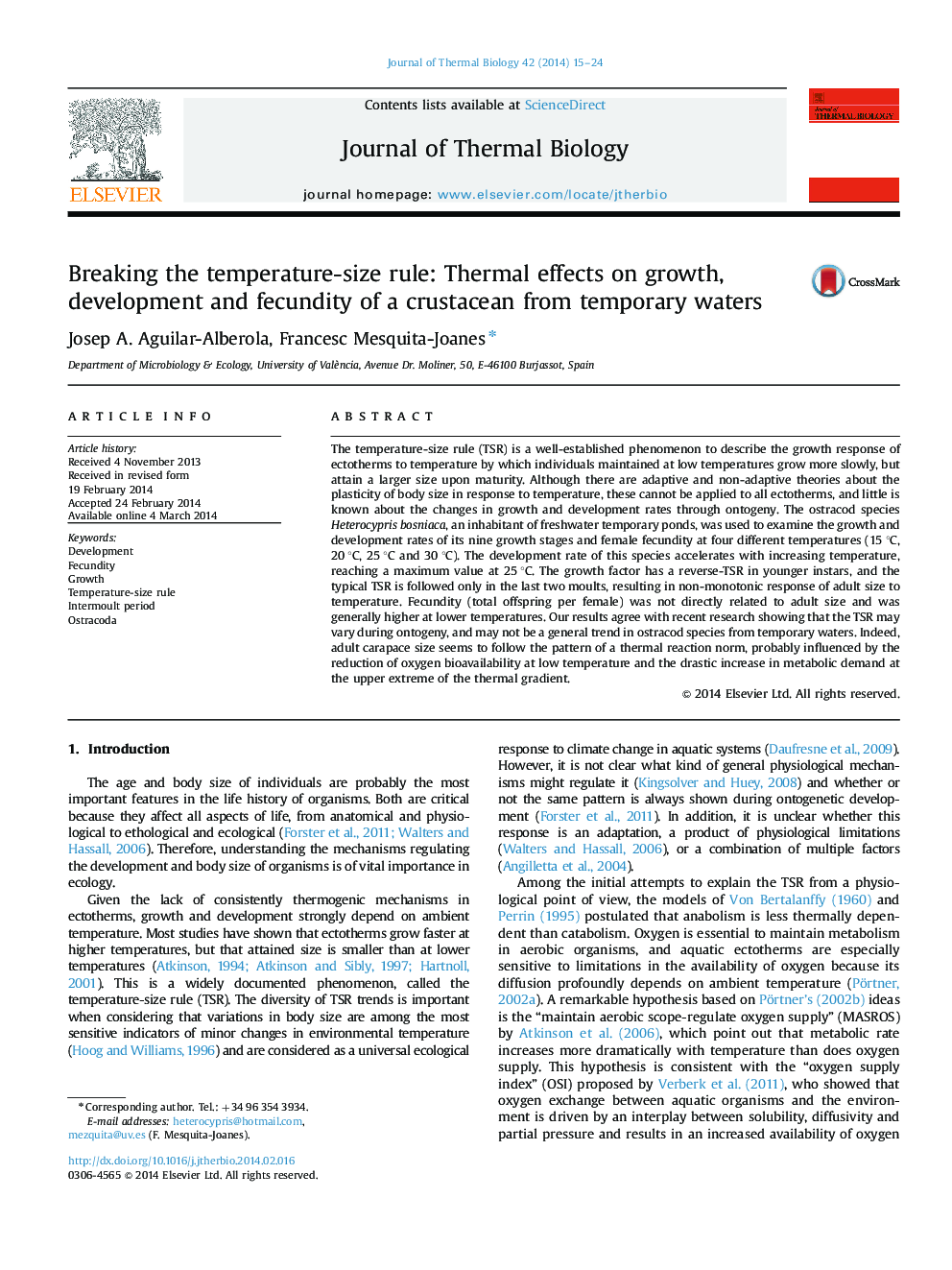| کد مقاله | کد نشریه | سال انتشار | مقاله انگلیسی | نسخه تمام متن |
|---|---|---|---|---|
| 2842982 | 1571103 | 2014 | 10 صفحه PDF | دانلود رایگان |
• Development time in Heterocypris bosniaca decreases with increasing temperature.
• The ostracod H. bosniaca does not follow the temperature-size rule.
• Growth response to temperature varies throughout the ontogeny.
• There is no significant linear relationship between fecundity and body size.
• Fecundity tends to decrease with increasing temperature.
The temperature-size rule (TSR) is a well-established phenomenon to describe the growth response of ectotherms to temperature by which individuals maintained at low temperatures grow more slowly, but attain a larger size upon maturity. Although there are adaptive and non-adaptive theories about the plasticity of body size in response to temperature, these cannot be applied to all ectotherms, and little is known about the changes in growth and development rates through ontogeny. The ostracod species Heterocypris bosniaca, an inhabitant of freshwater temporary ponds, was used to examine the growth and development rates of its nine growth stages and female fecundity at four different temperatures (15 °C, 20 °C, 25 °C and 30 °C). The development rate of this species accelerates with increasing temperature, reaching a maximum value at 25 °C. The growth factor has a reverse-TSR in younger instars, and the typical TSR is followed only in the last two moults, resulting in non-monotonic response of adult size to temperature. Fecundity (total offspring per female) was not directly related to adult size and was generally higher at lower temperatures. Our results agree with recent research showing that the TSR may vary during ontogeny, and may not be a general trend in ostracod species from temporary waters. Indeed, adult carapace size seems to follow the pattern of a thermal reaction norm, probably influenced by the reduction of oxygen bioavailability at low temperature and the drastic increase in metabolic demand at the upper extreme of the thermal gradient.
Journal: Journal of Thermal Biology - Volume 42, May 2014, Pages 15–24
